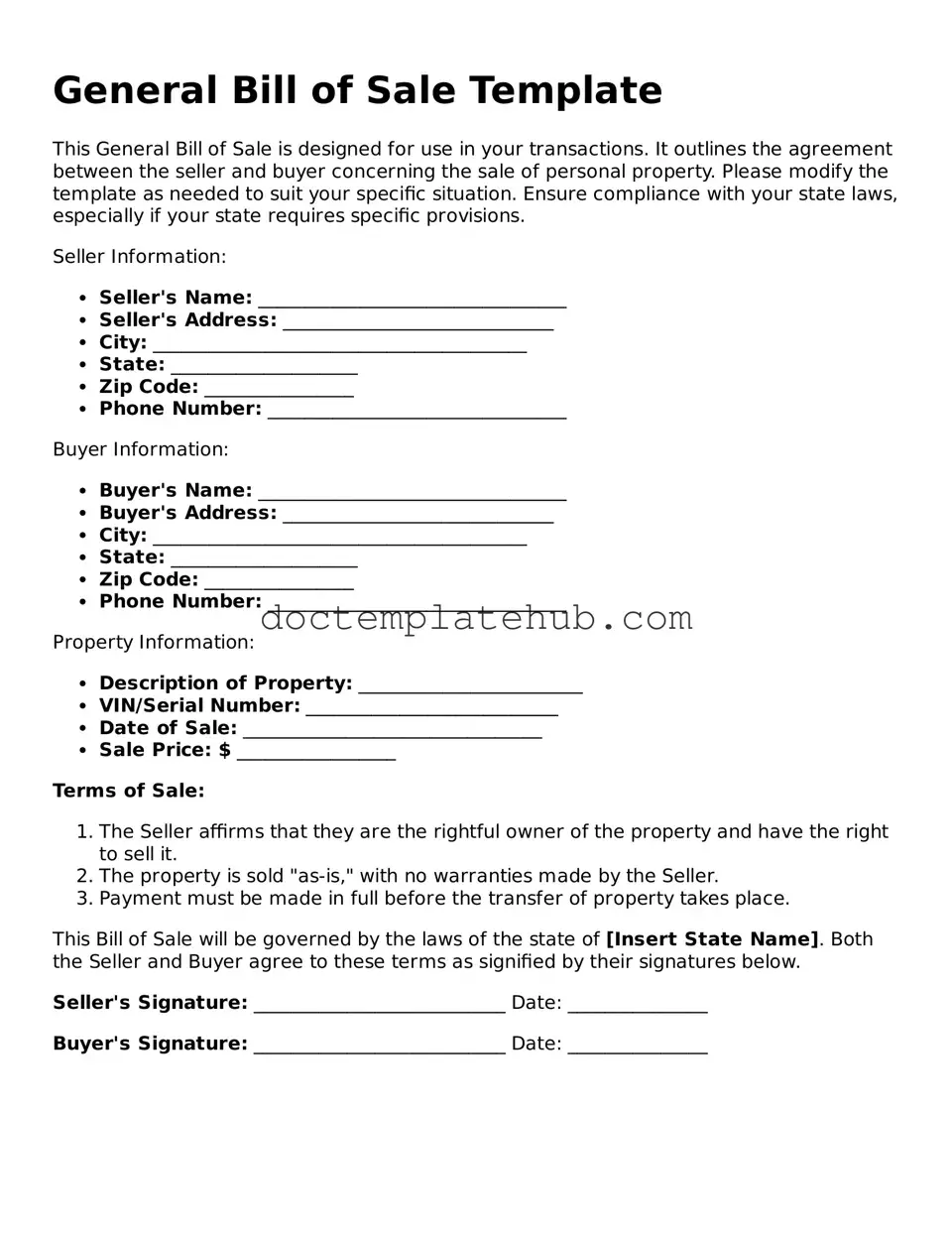The General Bill of Sale form is similar to a Vehicle Bill of Sale. Both documents serve to transfer ownership from one party to another, specifically for vehicles. A Vehicle Bill of Sale typically includes details such as the vehicle identification number (VIN), make, model, and year, alongside the purchase price and the names of both the buyer and seller. This document is crucial for registering the vehicle with the Department of Motor Vehicles (DMV) and may also serve as proof of ownership in case of disputes.
Another document closely related to the General Bill of Sale is the Personal Property Bill of Sale. This form is used for the sale of tangible personal property, such as furniture, electronics, or collectibles. Like the General Bill of Sale, it outlines the details of the transaction, including a description of the item, the purchase price, and the parties involved. This document can help protect both the buyer and seller by providing a clear record of the transaction.
A Real Estate Bill of Sale is also similar in purpose, although it pertains specifically to the sale of real property. This document often accompanies a real estate purchase agreement and includes details about the property, such as its address, legal description, and the agreed-upon sale price. While it is not a substitute for a deed, it serves as a record of personal property included in the real estate transaction, such as appliances or fixtures.
The Equipment Bill of Sale is another related document, particularly useful in business transactions involving machinery or equipment. This form details the equipment being sold, including specifications and serial numbers, as well as the sale price and terms of the transaction. This document is vital for businesses to maintain accurate records and ensure proper ownership transfer for expensive equipment.
A Mobile Home Bill of Sale is similar in that it is used for transferring ownership of mobile homes. This document typically includes information about the mobile home, such as its make, model, year, and identification number. It also outlines the sale price and the names of the buyer and seller, providing a clear record for both parties and facilitating the registration process with local authorities.
The Boat Bill of Sale is another document that shares similarities with the General Bill of Sale. This form is specifically designed for the sale of boats and watercraft. It includes pertinent details such as the boat's hull identification number (HIN), make, model, and year, along with the purchase price and buyer and seller information. This document is essential for registering the boat and proving ownership.
A Gun Bill of Sale is also relevant when discussing similar documents. This form is used to transfer ownership of firearms and typically includes details about the firearm, such as its make, model, and serial number. It protects both the buyer and seller by providing a written record of the transaction, which can be important for legal compliance and ownership verification.
The Livestock Bill of Sale is another important document in agricultural transactions. This form is used to transfer ownership of livestock, such as cattle, horses, or pigs. It includes details about the animals being sold, such as breed, age, and identification numbers. This document helps ensure that the sale is properly recorded and can be crucial for maintaining breeding records or complying with local regulations.
Finally, the Business Bill of Sale is similar as it pertains to the sale of a business or its assets. This document outlines the assets being sold, including equipment, inventory, and goodwill, along with the purchase price and terms of the sale. It serves to protect both parties by clearly defining what is included in the transaction and ensuring a smooth transfer of ownership.
